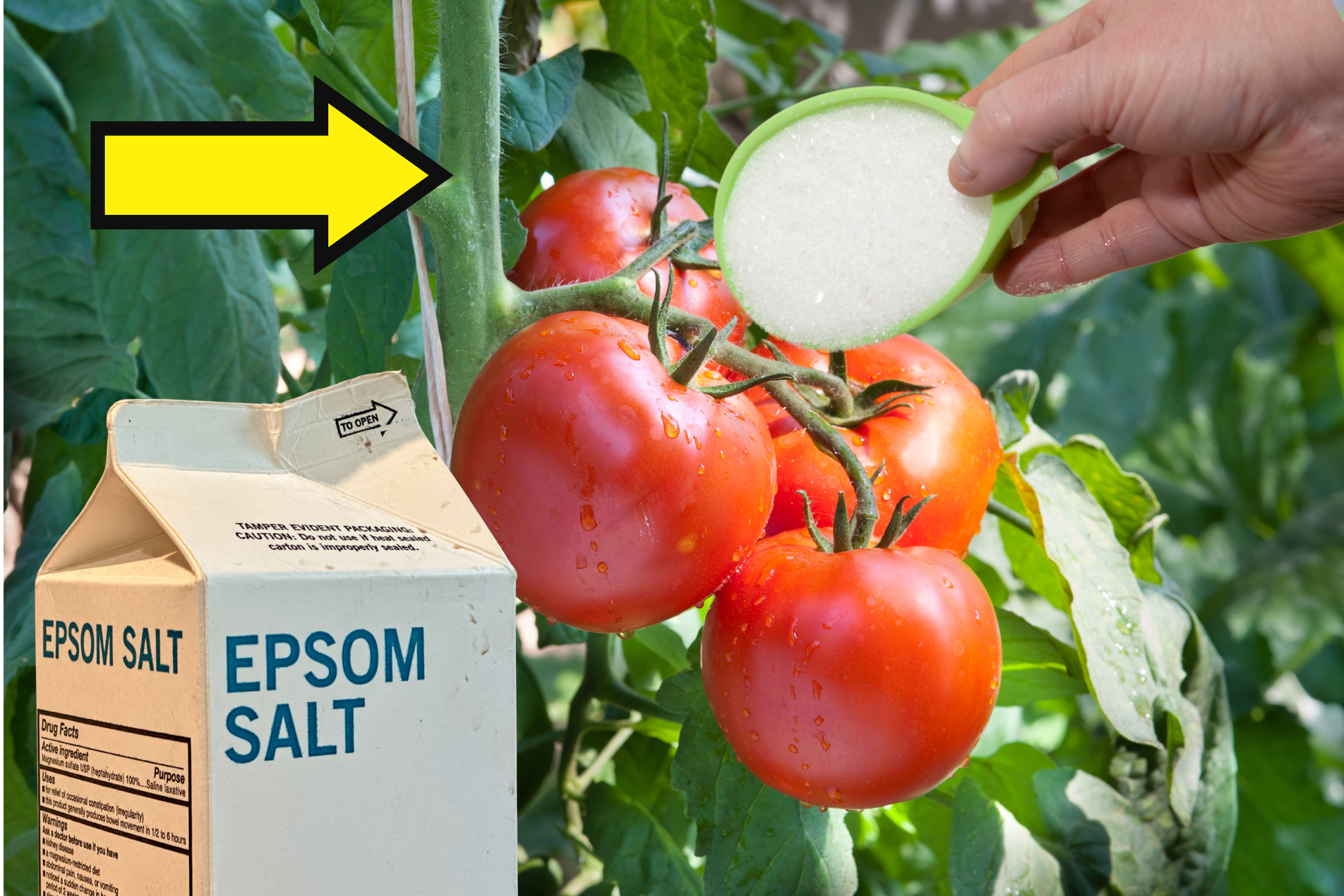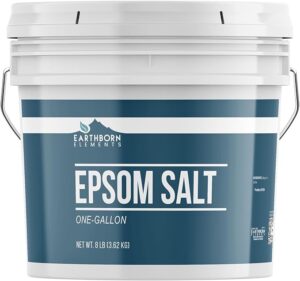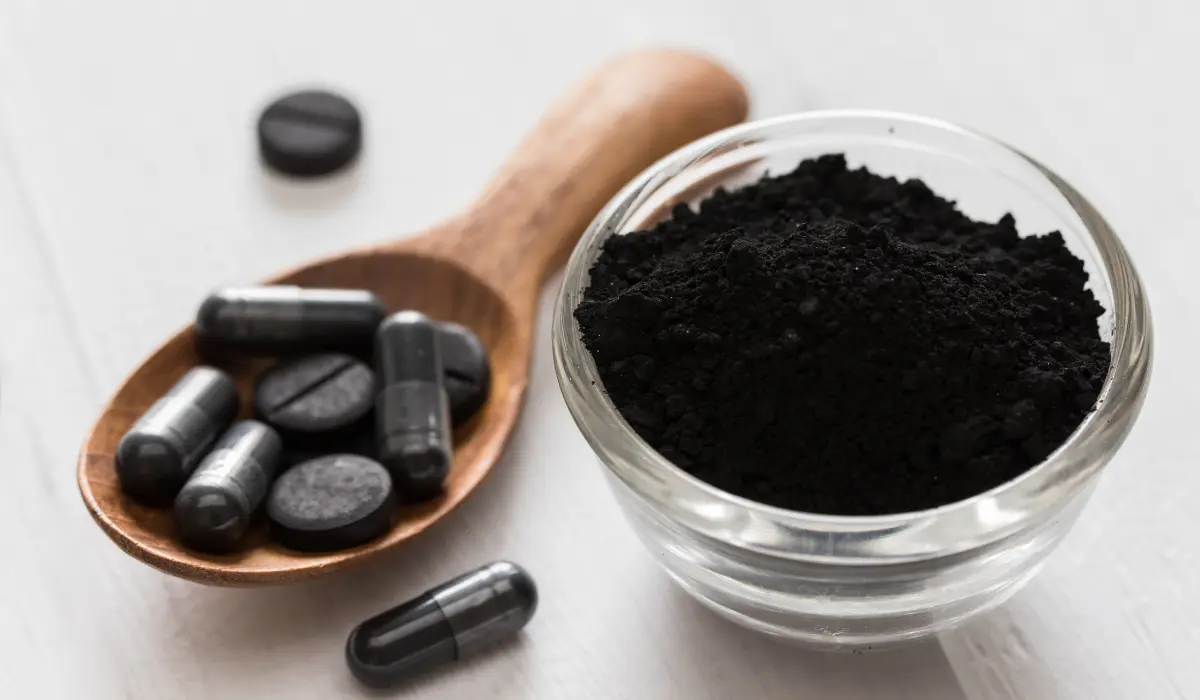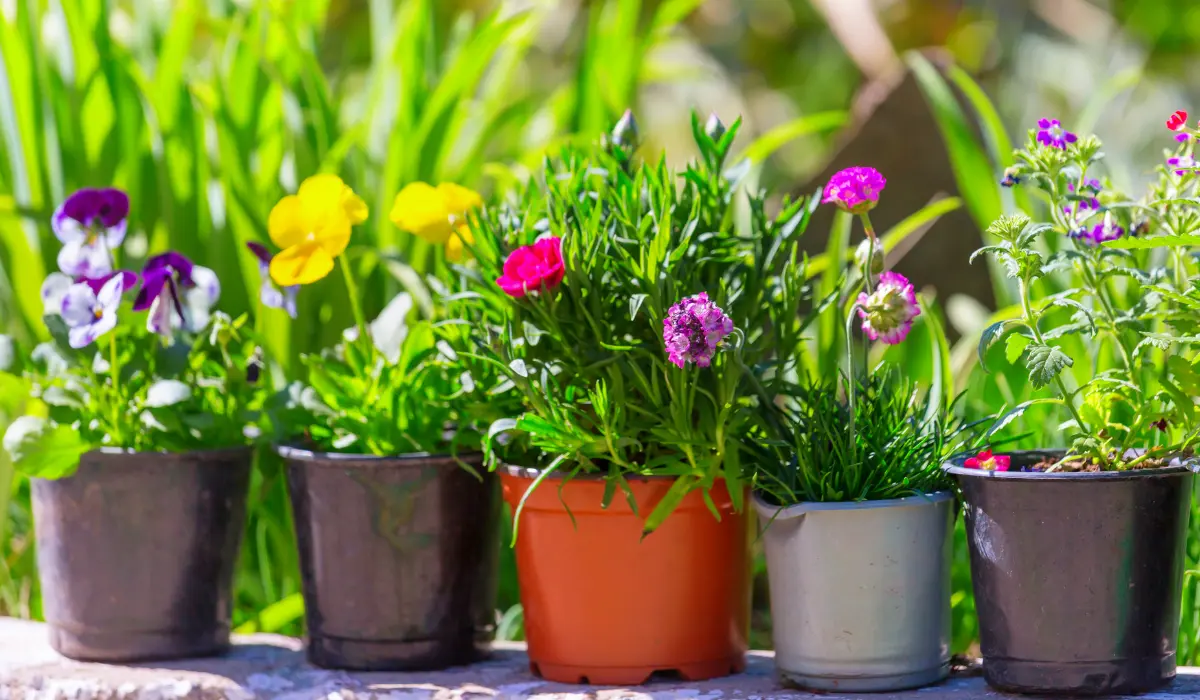Winter can be a challenging time for tomato growers, especially for those who love the satisfaction of nurturing their own juicy tomatoes even in the off-season.
Although the cooler months present obstacles, using Epsom salt is a simple and effective way to keep your plants thriving by promoting stronger growth, greener leaves, and improved fruit development.
Here’s how to harness the power of Epsom salt (magnesium sulfate) for your winter tomatoes, step by step.
What is Epsom Salt, and Why Use It for Tomatoes?
Epsom salt is rich in magnesium and sulfur, both of which are essential nutrients for plant health. Tomatoes, in particular, benefit from magnesium, which helps improve photosynthesis, aids in chlorophyll production, and can lead to better fruit setting and tastier tomatoes.
Using Epsom salt during the winter months can address magnesium deficiencies, which often manifest as yellowing leaves, reduced fruit size, and weak growth.
Preparing Your Winter Tomato Plants
Before diving into how to use Epsom salt, it’s crucial to set up your winter tomato plants properly. If you’re growing indoors or in a greenhouse:
🔹 Ensure ample light exposure
Tomatoes need at least 6-8 hours of light. Use grow lights if natural sunlight is limited.
🔹 Control temperature and humidity
Aim for temperatures between 65-75°F (18-24°C) during the day and a bit cooler at night.
🔹Select suitable containers
Choose pots with good drainage to prevent waterlogging.
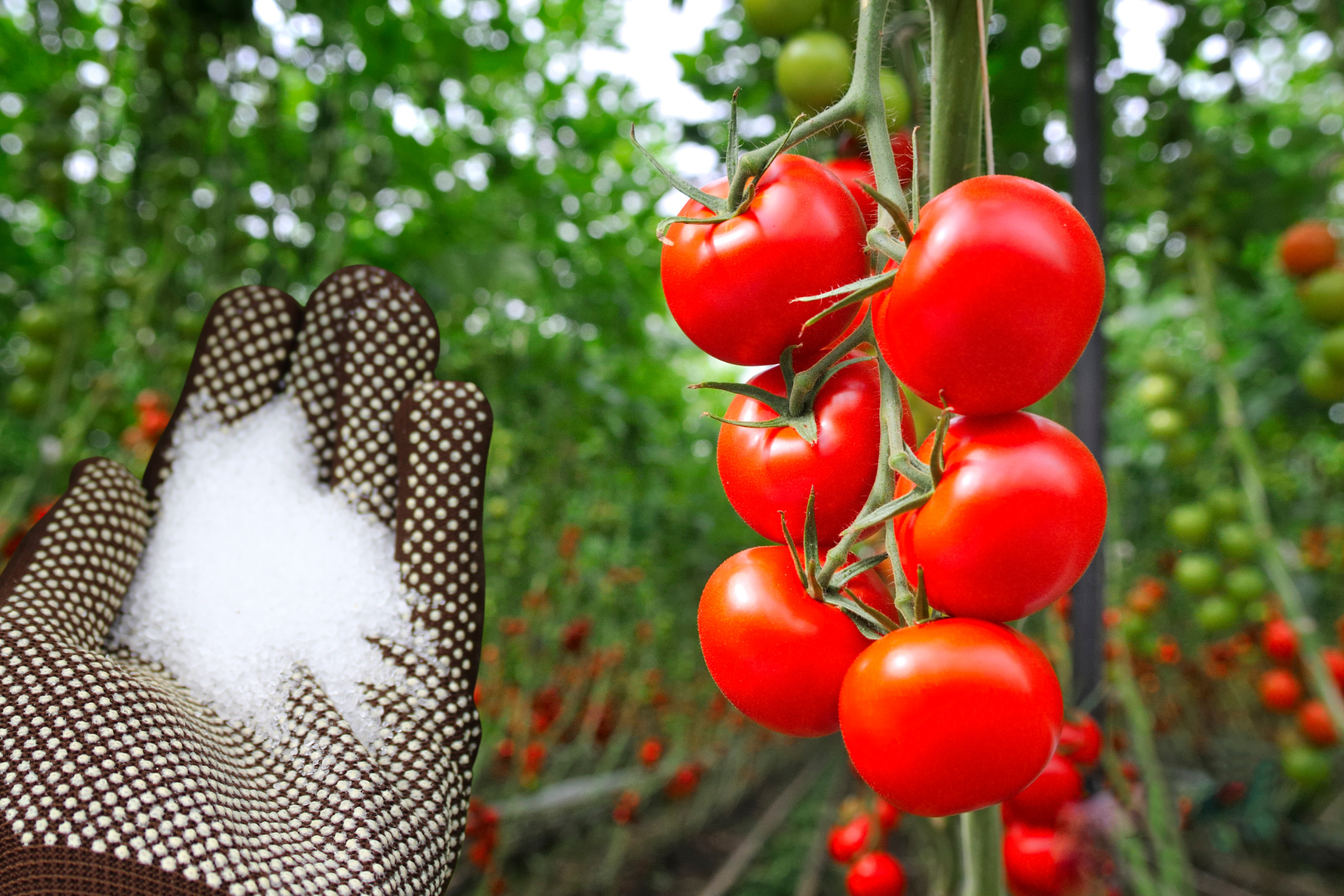
Step-by-Step Guide to Using Epsom Salt for Winter Tomatoes
1. Soil Preparation
🔹 Before planting
🔹 Mixing Ratio
Add about 1 tablespoon of Epsom salt per foot of plant height into the soil or mix 1-2 tablespoons per gallon of soil in containers.
2. Foliar Spray Application
🔹 Foliar feeding (spraying the leaves) allows for faster absorption of magnesium, especially if your plants show signs of deficiency.
🔹 Mixing Instructions: Dissolve 1 tablespoon of Epsom salt in a gallon of warm water.
🔹 Application: Use a spray bottle to mist the tomato leaves, covering both the tops and undersides. Apply every two weeks for best results.
🔹 Timing: Spray during the cooler part of the day, either in the morning or late afternoon, to prevent leaf burn and promote effective absorption.
3. Watering with Epsom Salt Solution
🔹 Regular Soil Drenching
As your tomatoes grow, continue supplementing magnesium through soil drenching.
🔹 Mixing Instructions
Dissolve 1 tablespoon of Epsom salt per gallon of water.
🔹 Application
Use the solution to water the base of the tomato plants once a month. Be careful not to overuse; too much magnesium can lead to nutrient imbalances.
4. Monitoring and Adjusting Dosage
🔹 Observe Plant Health
Keep an eye on your tomato plants’ leaves, stems, and fruit development. If you notice yellowing leaves or poor growth despite regular feeding, your plants may need a slight increase in Epsom salt.
🔹 Signs of Overuse
Too much Epsom salt can lead to an accumulation of salts in the soil, which may inhibit the root uptake of other nutrients. Reduce usage if plants show signs of stress, such as wilting or browning edges.

Other Considerations for Winter Tomato Care
1. Balanced Nutrition
Epsom salt alone cannot fulfill all the nutritional needs of tomato plants. Continue to use a balanced fertilizer suitable for tomatoes that contains nitrogen, phosphorus, and potassium to ensure comprehensive nutrition.
2. Watering Habits
Watering requirements decrease in winter due to reduced transpiration rates. However, make sure the soil remains moist but not soggy. Overwatering can cause root rot, especially in cooler environments.
3. Pest and Disease Management
Indoor growing conditions may reduce pest pressures, but aphids, spider mites, and fungal diseases can still become a problem. Regularly inspect your plants and use organic pest control measures if necessary.
4. Companion Planting (Optional)
If growing indoors in larger containers, you can try companion planting with herbs like basil, which can enhance tomato flavor and repel certain pests.
Frequently Asked Questions (FAQs)
1. Can I use Epsom salt on all tomato varieties?
Yes! Epsom salt benefits all tomato types, including heirlooms, cherry tomatoes, and determinate or indeterminate varieties.
2. How often should I use Epsom salt?
For foliar sprays, every two weeks is sufficient, while soil applications can be done monthly. Adjust based on your plants’ response.
3. What happens if I use too much Epsom salt?
Overuse can lead to salt buildup in the soil, hindering nutrient uptake. Monitor your plants for signs of distress, such as leaf curling or browning, and adjust accordingly.
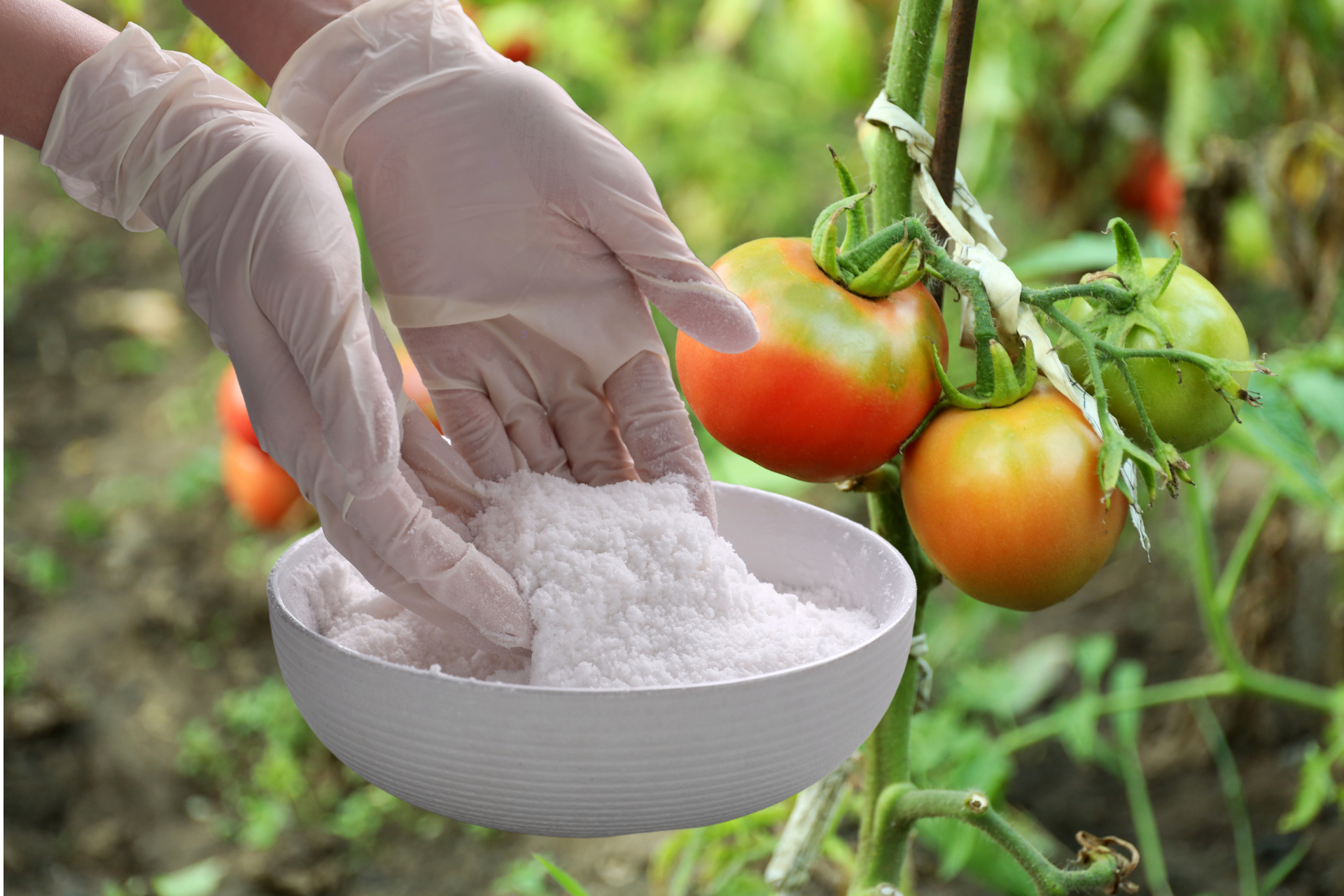
Conclusion
Using Epsom salt during the winter months is a simple, affordable way to give your tomato plants a magnesium boost, enhancing their growth and productivity.
By following these steps and closely monitoring your plant’s health, you can enjoy lush, green foliage and, eventually, flavorful tomatoes even when it’s cold outside.
